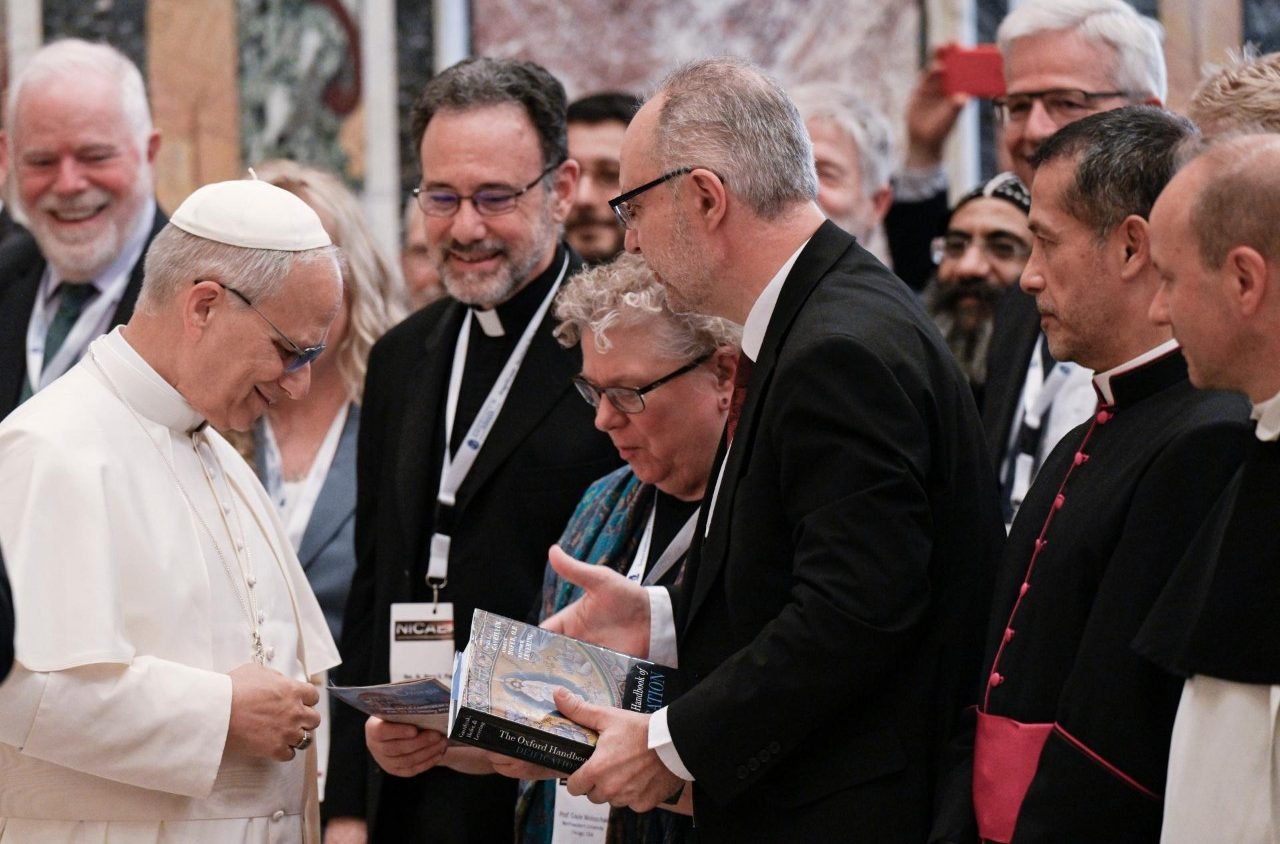When officials of the Holy See made a pilgrimage through the Jubilee Holy Door this week, they were joined by an Orthodox theologian whose organization helped organize a major Catholic-Orthodox conference on the Council of Nicaea.
By Devin Watkins
Around 5,000 people attending the Jubilee of the Holy See processed through the Holy Door of St. Peter’s Basilica on Monday, June 9, led by Pope Leo XIV.
As they entered, they passed by a plaque that memorialized an encounter in 1967 between Pope St. Paul VI and Ecumenical Patriarch Athenagoras of Constantinople. The inscription says they prayed “for the restitution of full communion between the Catholic and Orthodox Churches.”
Dr. Paul Gavrilyuk, President of the International Orthodox Theological Association, joined the Vatican employees on their pilgrimage to mark the 2025 Jubilee year.
Speaking to Vatican News, Dr. Gavrilyuk said the historic meetings between the Pope and the Patriarch were “incredibly important steps towards Church unity,” which his organization hopes to continue.
He attended the Jubilee of the Holy See “to offer my gratitude to God and also to listen to the Pope’s wise words about Christian unity and reconciliation.”
Dr. Gavrilyuk also serves as the Aquinas Chair of Theology and Philosophy at the University of St. Thomas in St. Paul, Minnesota, United States.
His organization, known as IOTA, helped organize a conference at the Pontifical Angelicum University in Rome last week, entitled “Nicaea and the Church of the Third Millennium: Towards Catholic-Orthodox Unity.”
The Council of Nicaea in 325 sought to “fix divisions in the Church and restore unity,” said Dr. Gavrilyuk. “They succeeded in proclaiming one creed, and that is the Nicene-Constantinople Creed we still say at Mass and worship [services].”
The conference on the 1,700th anniversary of Nicaea looked beyond the Council as a historical event, focusing on the future of unity in the Church.
“When we speak about the Church of the Third Millennium, the hope and expectation was that this would be a Church that in fact would enjoy, especially as far as Catholics and Orthodox are concerned, full communion,” he said. “And that of course means partaking of the Body and Blood of Christ at the same table.”
Dr. Gavrilyuk said the International Orthodox Theological Association unites over 1,700 Church leaders and scholars from 44 countries to facilitate the exchange of knowledge about the Orthodox tradition.
The conference on June 4-7 brought together Catholics of both the Latin rite and Eastern rites, as well as Bishops and scholars of the Coptic, Syriac, Chalcedonian, and Armenian traditions. They were joined by Archbishop Rowan Williams of the Angelican Communion and Cardinal Kurt Koch, Prefect of the Dicastery for Promoting Christian Unity.
“In past theological dialogues,” said Dr. Gavrilyuk, “we tended to emphasize more the trees of our divisions and differences and not the forest of our fundamental agreement on the fact that we believe in God who is Father, Son, and Holy Spirit. We also believe fundamentally that the Son of God who is fully God became human for us and for our salvation.”
Dr. Gavrilyuk said Catholic-Orthodox dialogue should focus on theological themes that unite us as Christians.
He said the theology of deification, or divinization, presents the opportunity of a low-hanging fruit, since there is little disagreement on its fundamental tenet – that we participate in the life of God and become “by God’s grace what is God is by nature.”
When he met Pope Leo XIV on Saturday, Dr. Gavrilyuk presented the work of IOTA and his desire to focus on deification.
“What’s extraordinary about this particular doctrine,” he concluded, “is that while it’s accepted by both Christian East and Christian West, it has actually never received any significant formal conciliar endorsement.”




